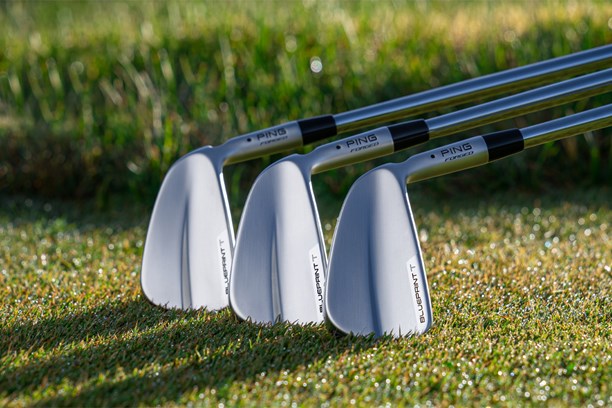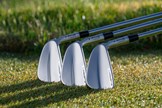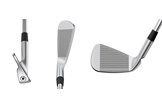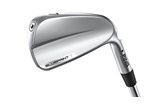Elite players only? Ping Blueprint T Iron Review
Last updated:
-
At a glance
- TG Rating
- Owner Rating
-
Pros
- Very good-looking iron
- Minimal offset will suit good players
- More forgiving than the original Blueprint
-
Cons
- Some may be put off by the toe screw and notched hosel
What we say...
The Ping Blueprint T iron is aimed at the small proportion of golfers who still insist on a muscle-back blade. Are its looks and feel enough to make it worth foregoing some forgiveness? Let’s find out…
Blades used to be seen as the crème de la crème of the best golf irons. Whether you grew up playing them, or waited until your game reached a good enough standard to warrant using them, pros and elite amateurs tended to take their pick from the best blade golf irons and never look back.
But times have changed. Nowadays, even most tour pros are using cavity-back irons, recognizing they can still get great feel and workability, with the added benefit of some forgiveness on less-than-perfect strikes.
So don’t expect to see many sets of Ping Blueprint T irons at your next weekend roll-up. But, if you’re a golfer who still insists that blades are the only way to play, should you consider them?
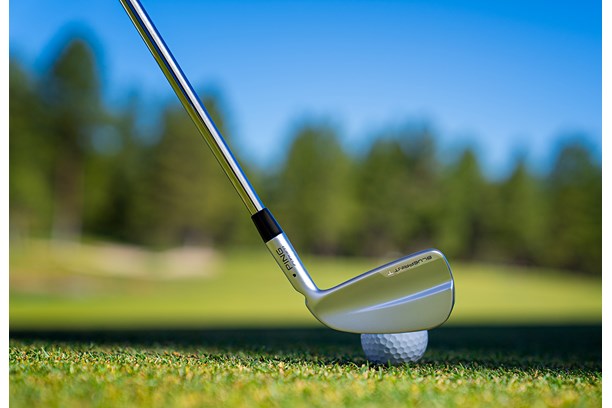
Everything you need to know about the Ping Blueprint T iron
For the highly skilled golfer who relies on workability and prefers the size and look of a muscle-back, the Ping Blueprint T is engineered as a single-piece, 8620 carbon steel forging that puts a premium on trajectory control and feel. Its muscle-back design concentrates mass through the impact zone to ensure a pleasing sound and feel, alongside great workability.
A shorter heel-face height allows the hosel transition to blend smoothly into the top rail, creating a clean, distraction-free appearance at address. The narrow soles enable consistent turf interaction from all conditions. Precision-milled grooves ensure the preferred launch and spin for players who rely on pinpoint control. A high-density toe screw and tip weight provide precise swingweight control and a slight boost in MOI.
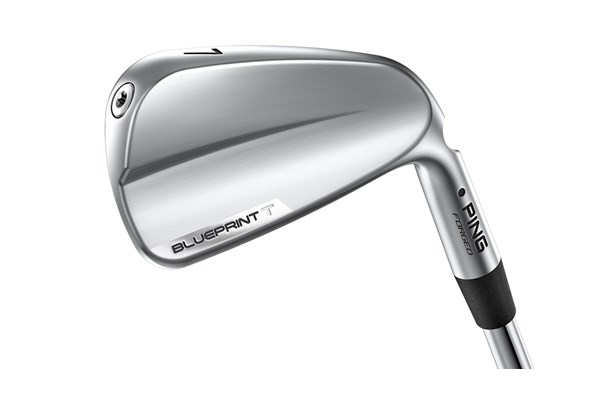
Tour collaboration
Developed following extensive testing with Ping’s tour pros, the Blueprint T is a refinement of the original Blueprint iron, aimed at elite players who prefer the look and feel of a compact, muscle-back iron.
Machined face & grooves
Precision-milling the face and grooves ensures the preferred launch and spin for players who rely on pinpoint control, assisted by the hydropearl 2.0 chrome finish. In tour-player testing, Blueprint T produced more ball speed than previous generations while increasing max height for green-holding performance.
Narrower sole
It’s a purely forged iron except for a high-density toe screw and shaft tip weight that provide precise swing weight control and a slight boost in MOI. Mass is concentrated through the impact zone to ensure a pleasing sound and feel with workability. Narrow soles enable consistent turf interaction and performance from all conditions.
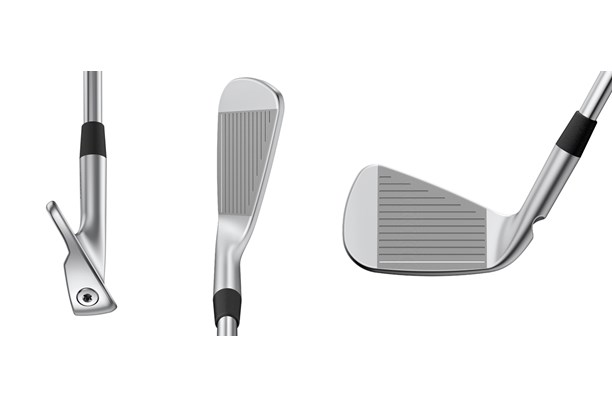
Clean and compact
Among the refinements to the overall shaping is a shorter heel-face height, allowing the hosel transition to blend smoothly into the top rail, creating a clean, distraction-free appearance with less offset, a shorter blade length, and a thin topline.
Stronger lofts
The Blueprint T will have 1° stronger lofts than its predecessor, the Ping Blueprint.
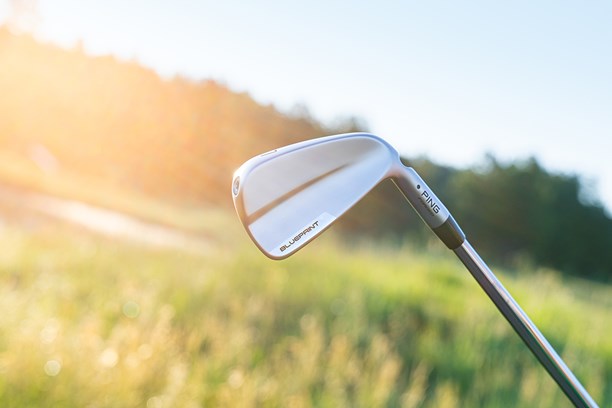
Create your perfect combo set
The Blueprint T is bang on the modern trend of brands making several players’ iron options to allow the game’s best golfers to choose how to set up their bag.
The Blueprint T comes with the same lofts as the cavity-back Ping Blueprint S and the Ping i230, meaning golfers can easily mix and match a combo of two or three sets to create their perfect setup across short, mid, and long irons.
The standard length of the Blueprint T 3-9 irons is ¼” shorter than Blueprint S to promote a lower ball flight, which elite players often prefer.
Video: Does the Ping Blueprint T iron suit you?
Details: Ping Blueprint T iron
RRP: £200 (s) £210 (g)
Availability: 3 – PW
Stock shaft: True Temper Dynamic Gold 120 (S300, X100)
7-iron loft: 33°
Category: Blade Iron
Forgiveness rating: 1/5
Verdict: Ping Blueprint T iron
It amazes me when golfers say they want to play with the same equipment as tour pros and then bemoan how an iron like the original Blueprint comes with such narrow soles and toplines and a particularly unforgiving look. Essentially tour pros get what tour players want and if you decide to mimic their equipment you have to accept all the quirks the best players desire.
Just like the original Blueprint, the new T has an incredibly good head shape, it’s really inviting sat behind the ball, and I just wish I was good enough to deploy the model on the golf course. Forged irons and Ping have never really been easy bedfellows as the company insisted for decades that cast irons could feel just as good as forged models. It’s intriguing that the company now then has three different irons with forged components (Blueprint T, Blueprint S, and i525), which for me marks a significant move away from the brand’s decades-old stance on the material best suited to iron production.

I love the way that Ping doesn’t make a big deal about their forging process, not in the way a company like Mizuno has to with their Pro 241. All in our test pro felt he struggled to feel a difference between the T and the Mizuno Pro 241, which has to say sometimes the myth around forged blade feel is built up to levels that don’t really exist. Where Mizuno might have forged iron heritage, Ping has tons of great iron know-how, and based on our data I’d have no hesitation in recommending the Blueprint T to anyone looking at new muscleback blades in 2024.
For our test pro, the model was the fastest and longest blade we’ve tested this year, but if I were buying a set myself my eyes would be drawn more to the model offering up the 3rd smallest carry distance drop-off, and shot area size, numbers that will contribute to lowering scores rather than getting carried away about feel and feedback.
Data comparison: How does the Ping Blueprint T compare to leading competitor muscleback blades?
| Iron | 7-Iron Loft | Ball Speed | Launch Angle | Backspin | Peak Height | Descent Angle | Carry Distance | Carry Distance Drop Off | Shot Area |
| Ping Blueprint T | 33° | 120.7 MPH (1) | 16.6° | 5630 RPM | 30 YDS | 44.1° | 178 YDS (1) | 8 YDS (T3) | 98.4 SQ YDS (3) |
| PXG 0317 ST | 33° | 118.9 MPH | 15.4° | 5619 RPM | 27 YDS | 42° | 174 YDS (T2) | 9 YDS | 184.5 SQ YDS |
| Wilson Staff Model Blade | 34° | 118.7 MPH | 16.9° | 5661 RPM | 30 YDS | 43.9° | 174 YDS (T2) | 14 YDS | 312.2 SQ YDS |
| Sub 70 639 MB | 32° | 119.3 MPH (3) | 14.8° | 5844 RPM | 26 YDS | 41.6° | 174 YDS (T2) | 9 YDS | 235.8 SQ YDS |
| Cobra King MB | 34° | 118.9 MPH | 17.1° | 6225 RPM | 31 YDS | 45° | 172 YDS | 8 YDS (T3) | 224 SQ YDS |
| Mizuno Pro 241 | 34° | 117.3 MPH | 17.6° | 5547 RPM | 30 YDS | 44.3° | 171 YDS | 11 YDS | 218.9 SQ YDS |
| Vega VMB | 31° | 119.5 MPH (2) | 15.3° | 6177 RPM | 28 YDS | 43.4° | 171 YDS | 5 YDS (1) | 50.5 SQ YDS (1) |
| TaylorMade P7MB | 34° | 118.5 MPH | 16.2° | 6490 RPM | 29 YDS | 44.1° | 170 YDS | 12 YDS | 235.2 SQ YDS |
| Callaway Apex 24 MB | 34° | 115.9 MPH | 17° | 6029 RPM | 29 YDS | 43.8° | 167 YDS | 18 YDS | 433.8 SQ YDS |
| Srixon Z-Forged | 33° | 116.7 MPH | 16.5° | 6123 RPM | 28 YDS | 43.6° | 167 YDS | 21 YDS | 588 SQ YDS |
| Titleist 620 MB | 35° | 115.6 MPH | 17.5° | 6362 RPM | 29 YDS | 44.7° | 165 YDS | 13 YDS | 318.5 SQ YDS |
| Takomo 301 MB | 34° | 115.9 MPH | 16.7° | 6637 RPM | 29 YDS | 44.7° | 163 YDS | 7 YDS (2) | 90.3 SQ YDS (2) |
| Average | 118 MPH | 16.5° | 6028.7 RPM | 28.8 YDS | 43.8° | 170.5 YDS | 11.25 YDS | 249.2 SQ YDS |
What Ping say about the Blueprint T irons
“Our two Blueprint irons represent a new strategy for us in the forged-iron category,” said John K. Solheim, PING CEO & President. “With the forged and forgiving cavity-back design of the “S” and the traditional muscle-back shape of the “T”, we’re targeting a wider range of golfers who prefer tour-style forged irons. The Blueprint name is a signal to skilled golfers looking for control, precision and feel from their irons. As the name implies, no details have been overlooked in the development of the new irons. Both models are engineered and manufactured to exact standards and deliver the performance expected in a PING iron.”
“Traditionally, an iron like the Blueprint T relies as much on the skill level of the player as it does on the technology,” Solheim said. “We understand that, but we’re always looking for ways to improve every iron we design. In the Blueprint T, every detail is extremely precise and calculated to ensure the performance demanded from a forged blade. It’s a true shot-maker’s iron crafted with precision, for precision.”
What the players say about the Ping Blueprint T irons
Louis Oosthuizen: “It’s definitely a little bit more forgiving. As I’m getting older, swing speed is getting lower, so getting it out of the first cut and getting a little bit of air out of it, I definitely see a difference in the longer irons compared to the normal Blueprint. I can see in the [shot] shape that it holds its line a little better in a crosswind so it might be a little bit more forgiving.
Comparable models
Name any muscle-back blade, really. I’d consider the TaylorMade P7MB, Cobra King MB, Takomo 301 MB, Mizuno Pro 241, Titleist 620 MB, and the like, and you’d be unlikely to see a huge performance difference between any of them.
About the Author

Simon Daddow – Today’s Golfer Equipment Editor
Having tested and played more than 10,000 clubs in his life, what Simon doesn’t know about golf clubs isn’t worth knowing.
He’s a specialist in all things metal having spent a large part of his career as a golf club maker and product development manager, and has worked in the golf industry for more than 30 years.
He joined EMAP Active (now Bauer Media) as Equipment Editor in 2006 and has made todays-golfer.com the most reliable source for golf club testing.
You can contact Simon via email and follow him on Twitter for loads more golf equipment insight.
Product Information
Ping Blueprint T iron
RRP: £200 (s) £210 (g)
Availability: 3 - PW
Stock shaft: True Temper Dynamic Gold 120 (S300, X100)
7-iron loft: 33°
Category: Blade Iron
Construction: One piece forged 8620 carbon steel
Forgiveness rating: 1/5
Visit the Ping website here
